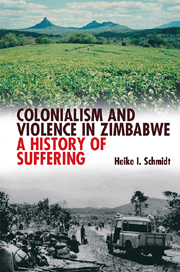6 - After Violence
Healing the Wounds of War
Published online by Cambridge University Press: 05 May 2013
Summary
The Second Chimurenga came to an end with a negotiated ceasefire period that lasted from 28 December 1979 to 4 January 1980, followed by the first democratic elections in Zimbabwe in February 1980. Under the Lancaster House Agreement of 1979, the 100 parliamentary seats were divided as follows: 20 for a white electoral roll, all of which went to the Rhodesian Front, the former ruling party, and 80 for the common roll. These seats were distributed as follows: ZANU(PF), under the leadership of Robert Mugabe, won 57 (63 per cent), all in their operational areas during the Chimurenga, with the exception of one constituency; ZAPU, under the leadership of Joshua Nkomo, came to the poll as the Patriotic Front (PF) and won 20 seats (26 per cent) along the same lines, while three seats went to the United African National Council, led by Bishop Abel Muzorewa. During the transition period, the territory known as Zimbabwe-Rhodesia between June and 12 December 1979, temporarily became a crown colony and was renamed Southern Rhodesia, with Lord Soames as its Governor. He announced the election results on 4 March, and the country erupted with celebrations that culminated on independence day, when at midnight 17 April 1980, the British flag was lowered and the new Zimbabwean flag was hoisted in Rufaro Stadium on the outskirts of Harare.
- Type
- Chapter
- Information
- Colonialism and Violence in ZimbabweA History of Suffering, pp. 211 - 244Publisher: Boydell & BrewerPrint publication year: 2013

